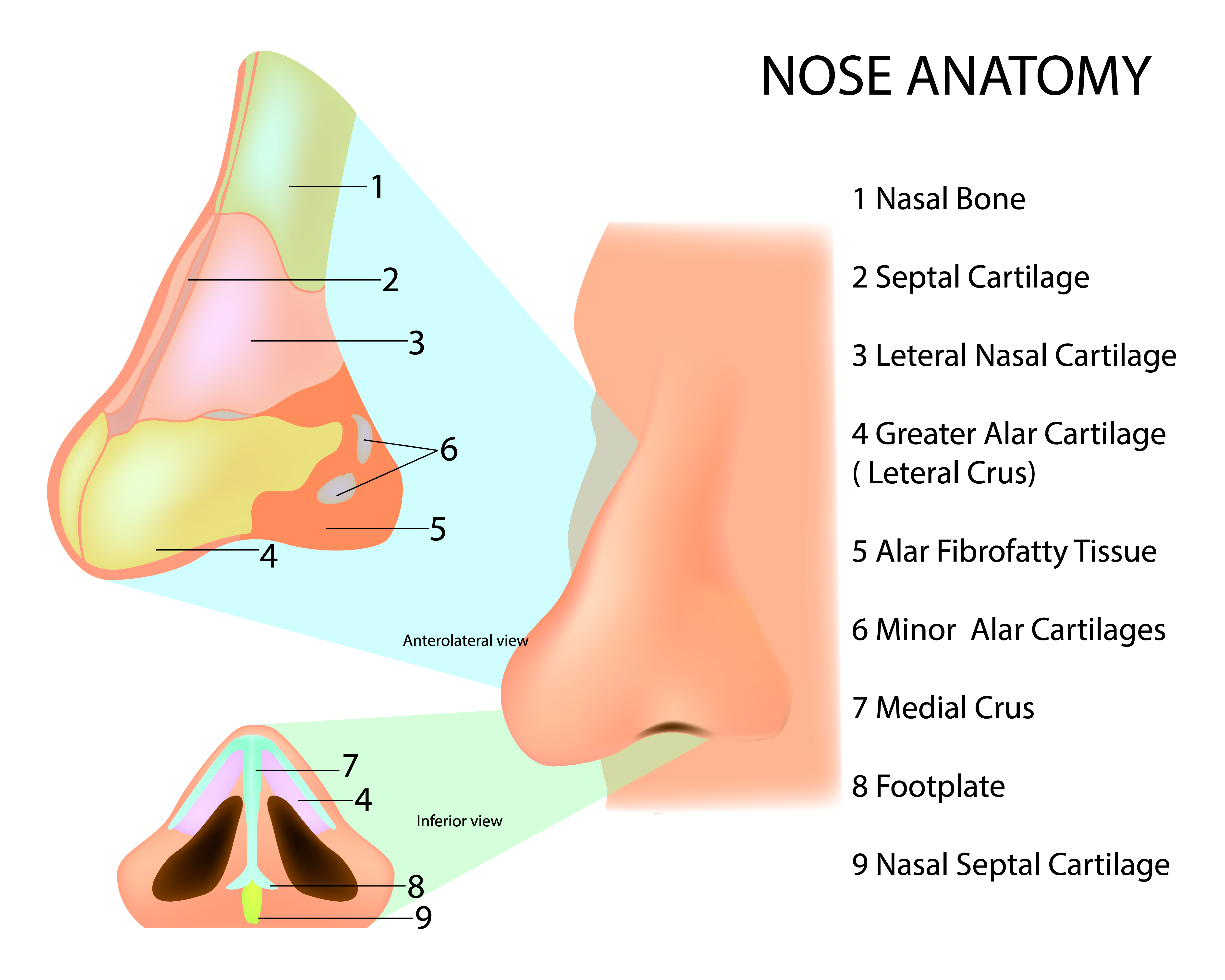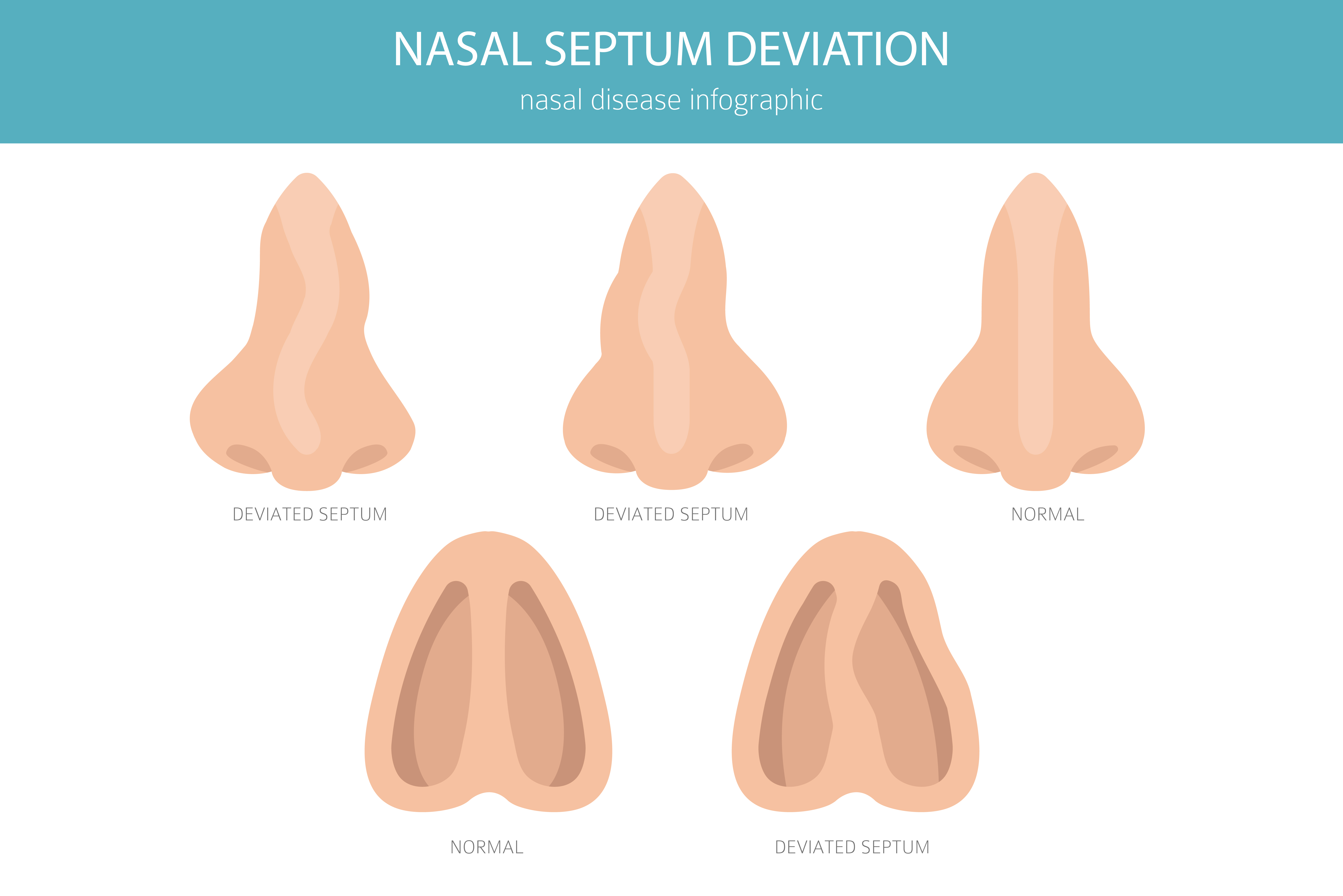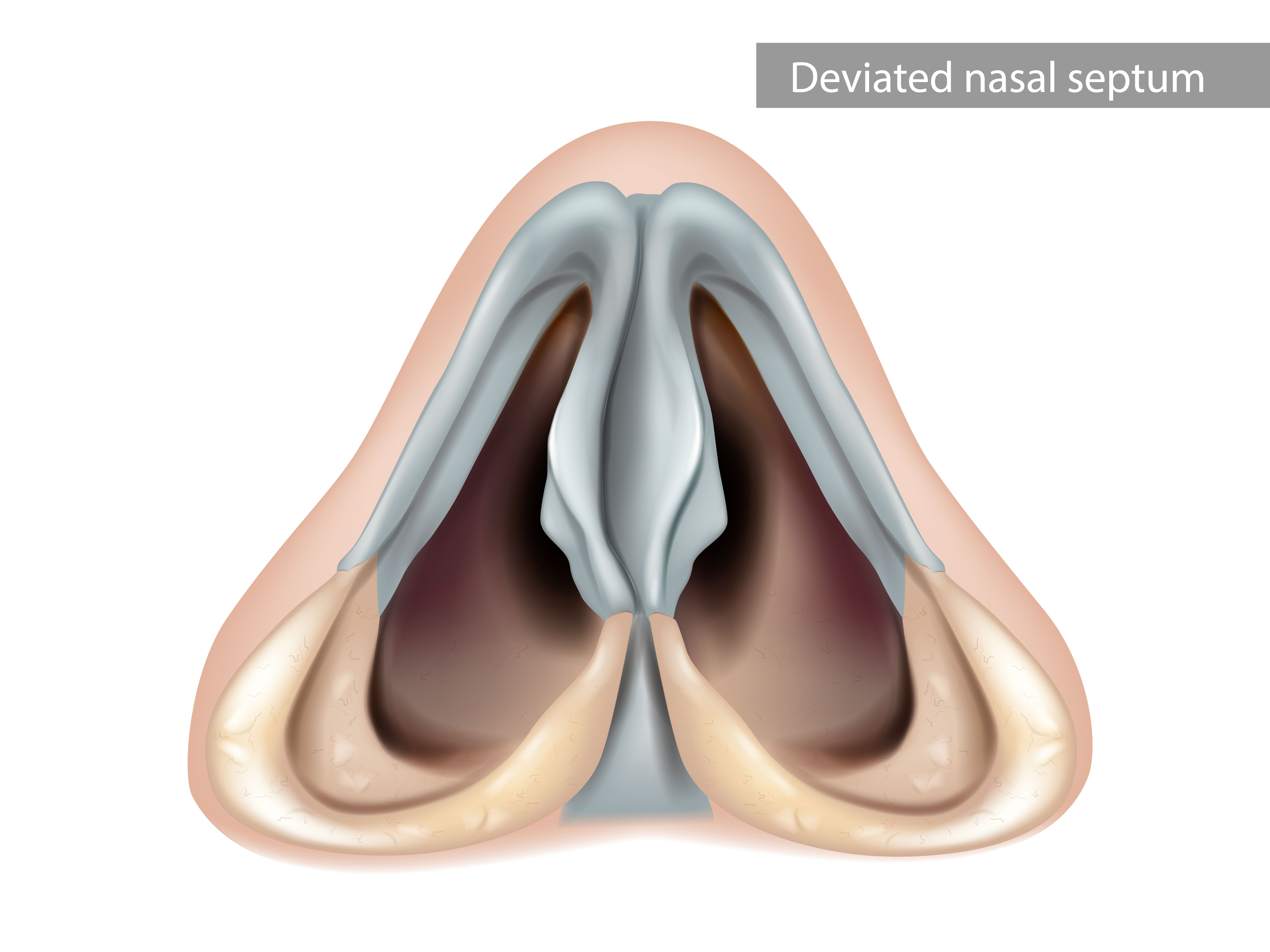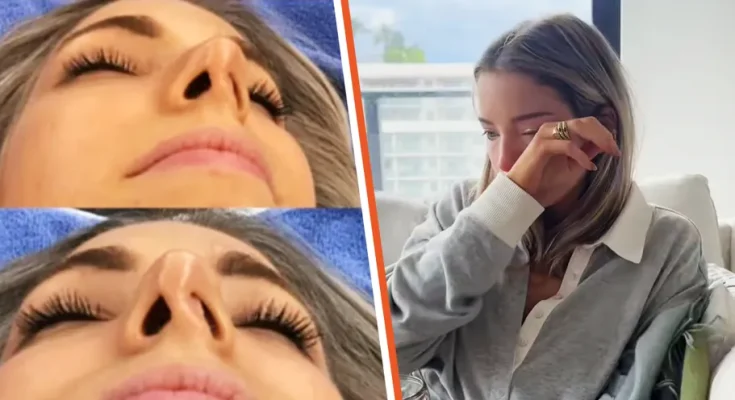Isabelle Lux never disliked her nose — straight, balanced, and pleasantly unremarkable. However, a medical issue triggered a chain of events that altered its shape forever. What started as a quick fix became a years-long ordeal and ultimately cost her a fortune.
At 33, the content creator reflects on what she once believed would be a simple medical fix: correcting a deviated septum. But what started as a routine procedure turned into a cautionary tale about the hidden risks of combining medical necessity with cosmetic enhancement.

Realistic isolated 3D human nose profile | Source: Getty images
Now, she uses her platform to warn others about the dangers of cutting corners on surgical procedures. She shares her story as a reminder that some shortcuts come with high stakes. Her story traces a path from breathing difficulties to surgical setbacks and, ultimately, to accepting a permanently altered appearance.

A side view and front view of a nose | Source: Getty images
For most of her early life, Isabelle Lux never gave much thought to how her nose looked. It was straight, balanced, and as she said, “pretty nice.” But while her nose may have looked just fine, it didn’t function well. Lux could only breathe properly through one nostril, something that always bothered her, though she didn’t immediately realize it was a medical issue.

Anatomy of the human nose | Source: Getty images
Her nostrils appeared even, giving no external indication of the internal structural issue that was making breathing difficult. That changed when, at 21, she finally saw a doctor who diagnosed her with a deviated septum, a condition where the thin wall separating the nostrils is off-center or crooked.

A vector illustration of nose with deviated septum | Source: Getty Images
According to the Mayo Clinic, this can restrict airflow and make it difficult to breathe, sometimes requiring a surgical procedure called septoplasty to correct it. Unlike some cases where the deviation is visible externally, Lux’s problem was completely internal, which explains why it took so long to get a proper diagnosis.

Deviated nasal septum: nasal cavity inferior view | Source: Getty images
In Lux’s case, the diagnosis came as a relief. The issue she had quietly endured for years had a name and a fix. In 2014, she scheduled a septoplasty to improve her breathing. Since the procedure was medically necessary, insurance would cover it. Lux soon learned that this also opened the door to optional cosmetic tweaks.
The procedure would involve moving the septum back to the middle of her nose, possibly requiring the surgeon to cut and remove parts of the septum before placing it back in a corrected position.
But then Lux learned something that would change the entire trajectory of her experience: since she was already going under the knife for a medical procedure, she could also ask for cosmetic changes if she wanted them.
“People were like, ‘Oh, you can get a free nose job,'” the TikToker recalls. “It never really occurred to me. I actually always liked my nose.” But the idea of cosmetic enhancement seemed almost too good to pass up.

Cosmetologist hands touches the patient’s nose | Source: Getty images
She began considering ways her nose could be improved, eventually deciding she wished it had a bit more of a “dip.” When she mentioned this to her doctors, they told her they couldn’t do that specific change. Therefore, Lux settled on a much simpler request.
She would ask them to make her nose “a little bit cuter.” Despite the invitation to include aesthetic improvements, there was little actual conversation about cosmetic changes during the planning stages. Lux wasn’t pushing for it, and the surgeons didn’t make it a priority. The septoplasty procedure itself involves making incisions inside the nose to access the septum.

The surgeon hands touches the patient’s nose | Source: Getty images
The surgeon then trims, moves, and sometimes replaces cartilage or bone to straighten the dividing wall. In some cases, if crooked nasal bones are pushing the septum to one side, the surgeon may need to make cuts in the bones of the nose to move them into their proper place. Small strips of cartilage called spreader grafts can help correct a deviated septum when the problem is along the bridge of the nose.

Deviated nasal septum and straightened septum after septoplasty | Source: Getty Images
Although Lux approached the cosmetic enhancement casually, she still had expectations. She thought she might wake up with a “nose job nose,” but when she came out of surgery, she looked the same. Rather than being disappointed, she was happy that she could breathe better and her nose looked fine. It all seemed like a success — at first.
Healing after septoplasty takes time, with nasal tissues stabilizing within three to six months. However, it’s still possible for cartilage and tissue to move or change shape over time, with some changes occurring for up to a year or more after the procedure. This would explain what happened next in Lux’s story.
For the first year after surgery, everything seemed fine. Lux was breathing better and felt grateful that the operation had resolved a lifelong issue. Her nose still looked the same, and there were no signs of complications, at least not right away. But then, slowly and without warning, things began to change.

Isabelle Lux, seen in a post dated April 14, 2025 | Source: TikTok/@isabelle.lux
“It was one of those things that I didn’t really notice changing because it was so gradual,” she explains. The changes were so subtle and slow that they escaped her daily attention, the way gradual weight loss or hair growth might go unnoticed by someone who sees themselves in the mirror every day.

A glimpse of Isabelle Lux’s collapsed nostril, seen in a post dated April 14, 2025 | Source: TikTok/@isabelle.lux
Then came the moment of realization. “One day I looked underneath and it was completely closed on one side,” she recalls. The nostril had collapsed, creating an appearance that shocked her. The woman who had always been satisfied with her nose’s appearance was now facing a drastically altered and dysfunctional result.
She isn’t completely certain about what the surgeon did internally during her septoplasty that eventually caused the nostril to collapse. The exact technical details of what went wrong may remain unclear, but the visual result was unmistakable and distressing.
Lux, who describes herself as particularly “aesthetically driven,” panicked upon realizing what had happened to her nose. The collapse had created an appearance she found deeply disturbing. “I was shocked. It looked to me like a Voldemort nose,” she stated.
Knowing she had to be extremely cautious in her next steps, Lux began the process of finding a qualified surgeon who could repair the damage. This time, there would be no insurance coverage, no medical necessity to justify the procedure, and no opportunity to save money.
She was facing the prospect of expensive revision surgery to fix what had gone wrong with her original procedure. The revision surgery came at a steep cost of $26,000 — an investment Lux made in hopes of restoring both function and appearance.
Rhinoplasty revision surgery is typically more complex and expensive than initial procedures because surgeons must work with already altered tissue and structures. The previous surgery had reshaped the internal architecture of her nose, making the repair more challenging and costly.
The irony wasn’t lost on her. What began as an attempt to save money by getting cosmetic enhancement along with medical treatment resulted in needing extensive and expensive cosmetic surgery. Between the first operation and the revision surgery, Lux’s nose eventually lost its original shape.
The changed appearance was an unavoidable consequence of the botched initial surgery and the subsequent repair work needed to restore function. Even with the successful revision surgery, she could never return to the straight, balanced, and pleasantly unremarkable nose she had started with.
The idea that a medically necessary surgery could double as an aesthetic upgrade had seemed harmless at first. In Lux’s case, that thinking eventually led to a botched result and a long, expensive road to repair it. Now, she urges others not to make the same mistake.
She has since adopted a strict new policy when it comes to surgery: never try to save money on something as serious as altering your body. “I will ALWAYS pay more (if not the most) for surgery from now on,” she wrote in a TikTok post that’s garnered thousands of views and supportive comments.
From dental work to rhinoplasty, Lux emphasizes that quality care is worth the investment. “It’s the same thing with teeth. It’s the same thing with everything,” she warns. Years after her initial septoplasty, Lux has physically healed, but the experience continues to shape how she approaches both self-image and social media.
Rather than bury the past, she shares it openly, determined to offer the kind of long-term perspective that’s often missing from online platforms. As a self-proclaimed “elder” on TikTok, Lux uses the opportunity to share her experience with younger users considering similar procedures.
She hopes to disrupt the flood of quick, bite-sized information on social media, reminding people that the full story is often more complex than it seems. “People just share little tiny pieces,” Lux states. “Nobody shares the full story.”
She reflects on how differently things might have unfolded if TikTok had been around when she was 21. Back then, if she had documented her journey in real-time, she likely would’ve celebrated the early results, unaware of the complications that would come later.
“I would’ve been like, ‘Great, look at me. I got a free nose job, everyone should do it,'” she admitted. This insight highlights a dangerous gap in how surgical experiences are communicated online. The immediate post-surgery period, when results might look promising, doesn’t tell the complete story.
Social media’s emphasis on quick, visual content creates a perfect storm for incomplete information that could influence others’ medical decisions. Lux’s transparency has sparked an outpouring of support from followers who admire both her honesty and the strength it took to recover.
“I thought your nose was naturally this beautiful and cute!” one fan commented. Others were stunned by her story, with reactions like “So scary,” “WHAT,” and “Oh that’s rough. Who did you end up going to that fixed it? Your nose is beautiful.”
Another follower shared, “Happy you got to where you are today with your revisions🥺❤️ so sorry that happened to you💔.”
The support isn’t limited to TikTok. On Instagram, fans echoed the same admiration. “Omg your [sic] beautiful 😍,” wrote one. “Gorgeous!” said another. One comment read, “😍😍 gorgeous gorgeous girl.”
Despite everything, Lux has turned her experience into something meaningful. She shares her story not only to help others avoid similar missteps but also to promote a more deliberate approach to health, beauty, and the rapid-fire way stories unfold online.
For anyone facing medical decisions, her journey offers a clear message: take your time, ask the right questions, and invest in quality care. Shortcuts, especially when it comes to surgery, rarely deliver the outcomes you’re hoping for.



